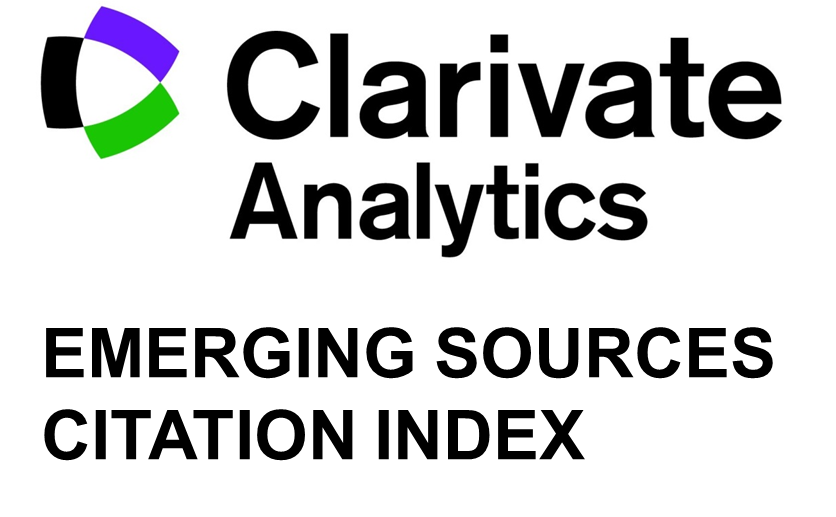D. O. Timoshkin, F. A. Smetanin, D. E. Gorshkova et al. “Us” or “Them”: Internal Migrants in the Perceptions of the Siberian Cities’ Citizens (on the Example of Irkutsk, Krasnoyarsk and Tomsk)
https://doi.org/10.15507/2413-1407.129.033.202502.316-334
EDN: https://elibrary.ru/avdscb
УДК / UDC 325.11(571.1/.5)
Abstract
Introduction. The study examines the process of civic identity formation in contemporary Russia in relation to the production and crossing of boundaries between “imagined communities”. Most existing research focuses on how cross-border migration influences the host community’s rethinking of its identity. At the same time, internal migrants, being part of the same society, can impact the identification of the “us-group” within the country. Studying this issue is crucial for understanding the configuration and structure of civic identity from the perspective of maintaining and preserving social solidarity. The authors analyze the influence of internal migration on the perceptions of residents in three Siberian cities regarding “us” and “them.” The aim of the study was to identify the mechanisms by which members of the “us-group” construct boundaries with respect to internal migrants, as well as the degree of permeability of these boundaries.
Materials and Methods. The authors based their research on 9 focus groups with citizens of Irkutsk, Krasnoyarsk, and Tomsk, aged 18–36, conducted in 2023. Respondents were recruited using snowball sampling. The material was analyzed using thematic axial data coding, performed in the MAXQDA program, and discourse analysis.
Results. It was found that respondents perceive both internal and cross-border migrants as individuals who fall into the gaps of a dense communication network, where integration into this network is the primary criterion for belonging to the “us-group” of civic identity holders. The study found that internal migration contributes to the formation of boundaries between locals and newcomers at the local level. Communication breakdowns occur between urban residents and rural migrants, which serve as the main reason for locals to exclude newcomers. However, the permeability of borders is more evident for internal migrants than for cross-border migrants. The research confirms that the key factors for the integration of newcomers into the host community are their inclusion in local social networks and their ability to navigate and use the urban environment.
Discussion and Conclusion. Internal migrants are able to bridge the gap to the host society much faster than cross-border migrants, which supports the thesis of strengthening civic identity in Russia. Nevertheless, the emerging communication breakdowns carry a potential for conflict and pose a threat to social solidarity. In this respect, the findings of the study may be useful in the development of migration policies, not only by drawing attention to the issue of internal migration, but also by highlighting key problems whose solution becomes a strategic priority.
Keywords: civil identity, internal migration, local identity, overcoming borders, Siberia
Conflict of interest. The authors declare no conflict of interest.
Funding. The study was carried out with the financial support of the Russian Science Foundation within the framework of project No. 22-78-10075 “Comparative analysis of informal practices of integration of internal and cross-border migrants in modern Siberian regional capitals (on the example of Irkutsk, Krasnoyarsk and Tomsk)”, https://rscf.ru/project/22-78-10075/.
For citation: Timoshkin D.O., Smetanin F.A., Gorshkova D.E. et al. “Us” or “Them”: Internal Migrants in the Perceptions of the Siberian Cities’ Citizens (on the Example of Irkutsk, Krasnoyarsk and Tomsk). Russian Journal of Regional Studies. 2025;33(2):316–334. https://doi.org/10.15507/2413-1407.129.033.202502.316-334
REFERENCES
1. Полунов А.Ю. Общероссийская гражданская идентичность: концептуальные основы и региональное воплощение. Государственное управление. Электронный вестник. 2023;(96):124–133. URL: https://spajournal.ru/index.php/spa/article/view/61/55 (дата обращения: 17.03.2024).
Polunov A.Yu. All-Russian Civic Identity: Conceptual Foundations and Regional Implementation. Gosudarstvennoye upravleniye. Elektronnyy vestnik. 2023;(96):124–133. (In Russ., abstract in Eng.) Available at: https://spajournal.ru/index.php/spa/article/view/61/55 (accessed 17.03.2024).
2. Санина А.Г. Генезис идеи идентичности в социологии и смежных науках. Социологические исследования. 2014;(12):3–11. URL: https://www.socis.isras.ru/files/File/2014/2014_12/Sanina.pdf (дата обращения: 17.03.2024).
Sanina A.G. [Genesis of the Idea of Identity in Sociology and Related Sciences]. Sotsiologicheskie issledovaniya. 2014;(12):3–11. (In Russ.) Available at: https://socis.isras.ru/files/File/2014/2014_12/Sanina.pdf (accessed 17.03.2024).
3. Дробижева Л.М. Российская идентичность: поиски определения и динамика распространения. Социологические исследования. 2020;(8):37–50. https://doi.org/10.31857/S013216250009460-9
Drobizheva L.M. Russian Identity: Searching for Definition and Distribution Dynamics. Sotsiologicheskie issledovaniya. 2020;(8):37–50. (In Russ., abstract in Eng.) https://doi.org/10.31857/S013216250009460-9
4. Варшавер Е.А., Иванова Н.С., Егорова Т.Д. Воображая российскую нацию: кто, с точки зрения жителей России, является частью российского общества и можно ли стать его частью? Вестник Российского университета дружбы народов. Серия: Политология. 2024:26(2):306–324. URL: https://journals.rudn.ru/political-science/article/view/39757
Varshaver E.A., Ivanova N.S., Egorova T.D. Imagining the Russian Nation: Who, According to the Residents of Russia, Constitute Russian Society, and Can an Outsider Become Its Member? RUDN Journal of Political Science. 2024;26(2):306–324. (In Russ., abstract in Eng.) Available at: https://journals.rudn.ru/political-science/article/view/39757/23548
5. Иванова Н.С., Егорова Т.Д., Варшавер Е.А., Савин И.С. «Жить так же, как мы живем»: представления жителей России об интеграции мигрантов. Актуальные проблемы Европы. 2024;(3):245–265. https://doi.org/10.31249/ape/2024.03.14
Ivanova N.S., Egorova T.D., Varshaver E.A., Savin I.S. “To Live Just Like We Do”: Russian Residents’ Perceptions of Migrant Integration. Aktualnye problemy Evropy. 2024;(3):245–265. (In Russ., abstract in Eng.) https://doi.org/10.31249/ape/2024.03.14
6. Дробижева Л.М. Динамика гражданской идентичности и ее ресурс в позитивных интеграционных процессах российского общества. Мониторинг общественного мнения: Экономические и социальные перемены. 2017;(4):7–22. https://doi.org/10.14515/monitoring.2017.4.02
Drobizheva L.M. Dynamics of Civic Identity and Its Potential in Positive Integration Processes in the Russian Community. Monitoring of Public Opinion: Economic and Social Changes. 2017;(4):7–22. (In Russ., abstract in Eng.) https://doi.org/10.14515/monitoring.2017.4.02
7. Гриценко В.В., Остапенко Л.В., Субботина И.А. Значимость гражданской, этнической и региональной идентичности для жителей малых российских городов и ее детерминанты. Социальная психология и общество. 2020;11(4):165–181. https://doi.org/10.17759/sps.2020110412
Gritsenko V.V., Ostapenko L.V., Subbotina I.A. The Importance of Civil, Ethnic and Regional Identity for Residents from Small Russian Towns and its Determinants. Sotsialnaya psikhologiya i obshchestvo. 2020;11(4):165–181. (In Russ., abstract in Eng.) https://doi.org/10.17759/sps.2020110412
8. Тишков В.А. Концептуальная динамика этнополитики в России (от Горбачёва до Путина). Вестник Российской нации. 2018;(6):9–30. URL: http://rosnation.ru/?page_id=4013 (дата обращения: 19.03.2024).
Tishkov V.A. Changing concepts of ethno-politics in Russia (from Gorbachev to Putin). Bulletin of Russian Nation. 2018;(6):9–30. (In Russ., abstract in Eng.) Available at: http://rosnation.ru/?page_id=4013 (accessed 19.03.2024).
9. Козлова М.А. «Стигма расы»: Стратегии совладания мигрантов из республик Северного Кавказа в Москве. Журнал исследований социальной политики. 2016;14(3):347–362. URL: https://jsps.hse.ru/article/view/3260 (дата обращения: 21.02.2024).
Kozlova M.A. “The Race Stigma”: The Coping Strategies Employed by Migrants from the North Caucasus in Moscow. Journal of Social Policy Studies. 2016;14(3):347–362. (In Russ., abstract in Eng.) Available at: https://jsps.hse.ru/article/view/3260 (accessed 21.02.2024).
10. Богатова О.А., Долгаева Е.И. Город в теории и на практике: факторы формирования социальной идентичности столицы республики в составе Российской Федерации. Регионология. 2022;30(2):447–469. https://doi.org/10.15507/2413-1407.119.030.202202.447-469
Bogatova O.A., Dolgaeva E.I. The City in Theory and in Practice: Factors of Social Identity Formation of the Capital of Republic within the Russian Federation. Russian Journal of Regional Studies. 2022;30(2):447–469. (In Russ., abstract in Eng.) https://doi.org/10.15507/2413-1407.119.030.202202.447-469
11. Ерохина Е.А. Этнические границы в межэтническом сообществе (на примере Республики Хакасия). Гуманитарные науки в Сибири. 2007;(3):100–103. https://www.elibrary.ru/ibvmgv
Erokhina E.A. [Ethnic Borders in the Interethnic Community (on the Example of the Republic of Khakassia)]. Gumanitarnye nauki v Sibiri. 2007;(3):100–103. (In Russ.) https://www.elibrary.ru/ibvmgv
12. Персидская О.А., Евдокимов А.И. Разные виды идентичностей у этнических групп Сибири: опыт сопоставления выводов социологических исследований. Исторические, философские, политические и юридические науки, культурология и искусствоведение. Вопросы теории и практики. 2016;(10):137–141. https://www.elibrary.ru/wlwonr
Persidskaya O.A., Evdokimov A.I. Types of Identity Among Ethnic Groups of Siberia: Comparing Sociological Research Findings. Istoricheskie, filosofskie, politicheskie i yuridicheskie nauki, kulturologiya i iskusstvovedenie. Voprosy teorii i praktiki. 2016;(10):137–141. (In Russ., abstract in Eng.) https://www.elibrary.ru/wlwonr
13. Малахов В.С., Симон М.Е. К генеалогии миграционной политики в России: столкновение двух правительственных рациональностей. Вопросы теоретической экономики. 2018;(1):58–72. https://doi.org/10.24411/2587-7666-2018-00004
Malakhov V.S., Simon M.E. To the Geneаlogy of Russian Migration Policy: the Collision between Two Governmentalities. Voprosy teoreticheskoi ekonomiki. 2018;(1):58–72. (In Russ., abstract in Eng.) https://doi.org/10.24411/2587-7666-2018-00004
14. Дятлов В.И. Трансграничные мигранты в современной России: динамика формирования стереотипов. Полития: Анализ. Хроника. Прогноз (Журнал политической философии и социологии политики). 2010;(3/4):121–149. https://doi.org/10.30570/2078-5089-2010-5859-3-121-149
Dyatlov V.I. [Cross-Border Migrants in Modern Russia: Dynamics of Stereotypes Formation]. Politiya: Analiz. Khronika. Prognoz (Zhurnal politicheskoi filosofii i sotsiologii politiki). 2010;(3/4):121–149. (In Russ.) https://doi.org/10.30570/2078-5089-2010-5859-3-121-149
15. Ивлева И.В., Тавровский А.В. Образы трудовых мигрантов в российских массмедиа. Этнографическое обозрение. 2019;(1):149–165. https://doi.org/10.31857/S086954150004186-4
Ivleva I.V., Tavrovskii A.V. The Representation of Labour Migrants in the Russian Media. Ehtnograficheskoe obozrenie. 2019;(1):149–165. (In Russ., abstract in Eng.) https://doi.org/10.31857/S086954150004186-4
16. Мукомель В.И. Ксенофобия и мигрантофобии в контексте культуры доверия. Мир России. 2014;23(1):137–166. URL: https://mirros.hse.ru/article/view/4977/5339 (дата обращения: 15.01.2024).
Mukomel V.I. Xenophobia in the Context of Culture of Trust. Mir Rossii. 2014;23(1):137–166. (In Russ., abstract in Eng.) Available at: https://mirros.hse.ru/article/view/4977/5339 (accessed 15.01.2024).
17. Мукомель В.И. Свои «иные»: внутрироссийские иноэтничные мигранты в московском мегаполисе. Федерализм. 2015;(1):79–92. URL: https://federalizm.rea.ru/jour/issue/view/41 (дата обращения: 18.01.2024).
Mukomel V.I. Their “Other”: Russian Domestic Inoethnic Migrants in the Moscow Megapolis. Federalizm. 2015;(1):79–92. (In Russ., abstract in Eng.) Available at: https://federalizm.rea.ru/jour/issue/view/41 (accessed 18.01.2024).
18. Евдокимов А.И., Пономарева И.В. Культурные ценности российской молодежи и мигрантов из стран Центральной Азии. Теория и практика общественного развития. 2021;(2):26–31. https://doi.org/10.24158/tipor.2021.2.3
Evdokimov A.I., Ponomareva I.V. Cultural Values of Russian Youth and Migrants from Central Asia. Teoriya i praktika obshchestvennogo razvitiya. 2021;(2):26–31. (In Russ., abstract in Eng.) https://doi.org/10.24158/tipor.2021.2.3
19. Замятина Н.Ю. Территориальные идентичности и социальные структуры. Общественные науки и современность. 2012;(5):151–163. https://www.elibrary.ru/pfzsdx
Zamyatina N.Yu. [Territorial Identities and Social Structures]. Obshchestvennye nauki i sovremennost. 2012;(5):151–163. (In Russ.) https://www.elibrary.ru/pfzsdx
20. Булатов А.О. Российское государство и «внутренние» мигранты-мусульмане: тенденции взаимодействия и стратегии адаптации. Вестник Евразии. 2007;(3):68–77. URL: https://sciup.org/eavest/2007-3 (дата обращения: 15.03.2024).
Bulatov A.О. [The Russian State and “Internal” Muslim Migrants: Interaction Trends and Adaptation Strategies]. Vestnik Evrazii. 2007;(3):68–77. (In Russ.) Available at: https://sciup.org/eavest/2007-3 (accessed 15.03.2024).
21. Мукомель В.И. Проблемы интеграции внутрироссийских иноэтничных мигрантов. Социологические исследования. 2016;(5):69–79. URL: https://www.socis.isras.ru/files/File/2016/2016_5/69_79_Mukomel.pdf (дата обращения: 10.04.2024).
Mukomel’ V.I. [Problems of Integration of Intra-Russian Foreign-Ethnic Migrants]. Sotsiologicheskie issledovaniya. 2016;(5):69–79. (In Russ.) Available at: https://www.socis.isras.ru/files/File/2016/2016_5/69_79_Mukomel.pdf (accessed 10.04.2024).
22. Zhao J., Pan H., Wahid M., Liu F. Vulnerability of Chinese Rural-to-urban Migrants to Social Exclusion: Spatial Pattern and Mechanism. Frontiers of Architectural Research. 2021;10(3):572–583. https://doi.org/10.1016/j.foar.2021.03.006
23. Chan K.W., Buckingham W. Is China Abolishing the Hukou System? The China Quarterly. 2008;(195):580–606. http://doi.org/10.1017/S0305741008000787
24. Chan A. Migrant Workers’ Fight for Rights in China. Current History. 2016;115(782):209–213. https://doi.org/10.1525/curh.2016.115.782.209
25. Friedman E., Lee C.K. Remaking the World of Chinese Labour: A 30-Year Retrospective. British Journal of Industrial Relations. 2010;48(3):507–533. https://doi.org/10.1111/j.1467-8543.2010.00814.x
26. Wu W. Urban Infrastructure Financing and Economic Performance in China. Urban Geography. 2010;31(5):648–667. https://doi.org/10.2747/0272-3638.31.5.648
27. Liu E., Li Z., Liu Y., Chen H. Growth of Rural Migrant Enclaves in Guangzhou, China: Agency, Everyday Practice and Social Mobility. Urban Studies. 2015;52(16):3086–3105. https://doi.org/10.1177/0042098014553752
28. Wu F. Housing in Chinese Urban Villages: The Dwellers, Conditions and Tenancy Informality. Housing Studies. 2014;31(7):852–870. https://doi.org/10.1080/02673037.2016.1150429
29. Song Y., Zenou Y., Ding C. Let’s Not Throw the Baby Out with the Bath Water: The Role of Urban Villages in Housing Rural Migrants in China. Urban Studies. 2008;45(2):313–330. https://doi.org/10.1177/0042098007085965
30. Lui L., Chan K.W. “Rural but not Rural”: Gendered and Classed Moral Identities in Liminal Spaces in Guangdong, China. Eurasian Geography and Economics. 2022;63(2):239–258. https://doi.org/10.1080/15387216.2020.1833358
31. Njwambe A., Cocks M., Vetter S. Ekhayeni: Rural-Urban Migration, Belonging and Landscapes of Home in South Africa. Journal of Southern African Studies. 2019;45(2):413–431. http://doi.org/10.1080/03057070.2019.1631007
32. Albert A.O., Onodje O. Migration and Cultural Identity Retention of Igbo Migrants in Ibadan, Nigeria. Journal of Sustainable Development. 2016;9(2):137–144. http://doi.org/10.5539/jsd.v9n2p137
33. Abiola M., Ndisika M. Internal Migration and Multi-Ethnicity: Sense of Belonging of the Nigerian Second-Generation Migrants. International Journal of Humanities and Social Development Research. 2022;6(1):54–77. Available at: https://scholar.google.com/citations?user=f_yAaEUAAAAJ&hl=en (accessed 10.04.2024).
34. Abbas R. Internal Migration and Citizenship in India. Journal of Ethnic and Migration Studies. 2016;42(1):150–168. https://doi.org/10.1080/1369183X.2015.1100067
35. Chaklader M.A. Understanding Ethnic Identity in the Context of Internal Migration: a Case Study of University Students of Ethnic Minority Origins in Urban Bangladesh. PEOPLE: International Journal of Social Sciences. 2019;5(1):328–349. http://doi.org/10.20319/pijss.2019.51.328349
36. Штейнберг И.Е. Логические схемы обоснования выборки для качественных интервью: «восьмиоконная» модель. Социология: методология, методы, математическое моделирование (Социология: 4М). 2014;(38):38–71. URL: https://www.soc4m.ru/index.php/soc4m/article/view/3770 (дата обращения: 19.12.2024).
Shteinberg I.E. A Logical Scheme to Justify the Sample in Qualitative Interview: An “8-Window Sample Model”. Sotsiologiya: metodologiya, metody, matematicheskoye modelirovaniye (Sotsiologiya: 4M). 2014;(38):38–71. (In Russ., abstract in Eng.) Available at: https://www.soc4m.ru/index.php/soc4m/article/view/3770 (accessed 19.12.2024).
About the authors:
Dmitriy O. Timoshkin, Dr.Sci. (Sociol.), Senior Researcher in the Laboratory of Historical and Political Demography, Irkutsk State University (1 Karl Marx St., Irkutsk 664003, Russian Federation), Professor of the Chair of Information Technologies in Creative Industries, Humanitarian Institute of Siberian Federal University (79 Prospekt Svobodnyi, Krasnoyarsk 660041, Russian Federation), ORCID: https://orcid.org/0000-0001-5478-0469, Researcher ID: E-4471-2019, Scopus ID: 57205318934, SPIN-code: 6568-6235, dmtrtim@gmail.com
Fedor A. Smetanin, Cand.Sci. (Histor.), Junior Research in the Laboratory of Historical and Political Demography, Irkutsk State University (1 Karl Marx St., Irkutsk 664003, Russian Federation), Senior Lecturer of the Chair of Cultural Studies and Museology, Institute of Arts and Culture, National Research Tomsk State University (36 Prospekt Lenina, Tomsk 634050, Russian Federation), ORCID: https://orcid.org/0000-0002-0408-9845, Researcher ID: AAO-6585-2020, Scopus ID: 57783110200, SPIN-code: 4055-0300, f-smetanin@mail.ru
Diana E. Gorshkova, Junior Researcher in the Laboratory of Historical and Political Demography, Irkutsk State University (1 Karl Marx st., Irkutsk 664003, Russian Federation), Assistant of the Chair of Anthropology and Ethnology, Faculty of Historical and Political Sciences, National Research Tomsk State University (36 Prospekt Lenina, Tomsk 634050, Russian Federation), ORCID: https://orcid.org/0000-0003-0014-5405, Researcher ID: AAO-6975-2020, Scopus ID: 57221914634, SPIN-code: 6085-7996, br.diana21@gmail.com
Andrei A. Voloshin, Junior Researcher in the Laboratory of Historical and Political Demography, Irkutsk State University (1 Karl Marx St., Irkutsk 664003, Russian Federation), ORCID: https://orcid.org/my-orcid?orcid=0000-0002-4326-5290, nishlov94@gmail.com
Kirill A. Ivanov, Junior Researcher in the Laboratory of Historical and Political Demography, Irkutsk State University (1 Karl Marx St., Irkutsk 664003, Russian Federation), Researcher of the Federal Research Center E.A. Favorsky “Irkutsk Institute of Chemistry. Siberian Branch of the Russian Academy of Sciences” (1 Favorskogo St., 664033 Irkutsk, Russian Federation), ORCID: https://orcid.org/0000-0002-3895-0082, Researcher ID: O-9236-2015, Scopus ID: 59248985100, SPIN-code: 8077-4256, ivanov-ka@word.isu.ru
Iuliia O. Koreshkova, Junior Researcher in the Laboratory of Historical and Political Demography, Irkutsk State University (1 Karl Marx St., Irkutsk 664003, Russian Federation), ORCID: https://orcid.org/0000-0002-5582-6032, Researher ID: JSK-5702-2023, Scopus ID: 57658268400, SPIN-code: 5742-0242, yuliakodzhaeva@yandex.ru
Arina E. Sorokina, Bachelor of Cultural Studies, Siberian Federal University (79 Prospekt Svobodnyi, Krasnoyarsk 660041, Russian Federation), ORCID: https://orcid.org/0000-0002-7949-6816, arinasoroka47@gmail.com
Sofiya A. Ignatenko, Bachelor of Cultural Studies, Siberian Federal University (79 Prospekt Svobodnyi, Krasnoyarsk 660041, Russian Federation), ORCID: https://orcid.org/0000-0001-7057-5262, ajifos01102002@mail.ru
Galina A. Shaposhnikova-Murashova, Bachelor of Cultural Studies, Siberian Federal University (79 Prospekt Svobodnyi, Krasnoyarsk 660041, Russian Federation), ORCID: https://orcid.org/0000-0002-0174-068X, galya.shaposhnickova@yandex.ru
Contribution of the authors:
D. O. Timoshkin – formulating research idea, goals, and objectives; developing and designing research methodology; supervising, leading, and mentoring the planning and conduct of the study; implementing the research process, including data collection; writing a draft manuscript; making comments and corrections.
F. A. Smetanin – developing and designing the research methodology; implementing the research process, including data collection; writing a draft manuscript; making comments and corrections.
D. E. Gorshkova – developing and designing the research methodology; implementing the research process, including data collection; developing the research methodology; writing a draft manuscript; making comments and corrections.
A. A. Voloshin – carrying out the research process, including data collection; writing a draft manuscript; making comments and corrections.
K. A. Ivanov – carrying out the research process, including data collection; processing and analyzing data; writing a draft manuscript; making comments and corrections.
I. O. Koreshkova – formulating the research idea, goals and objectives; writing a draft manuscript, including translation into a foreign language; making comments and corrections.
А. Е. Sorokina – carrying out the research process, including data collection; making comments and corrections.
S. A. Ignatenko – carrying out the research process, including data collection; making comments and corrections.
G. A. Shaposhnikova-Murashova – carrying out the research process, including data collection; making comments and corrections.
Availability of data and materials. The datasets used and/or analyzed during the current study are available from the authors on reasonable request.
The authors have read and approved the final manuscript.
Submitted 07.10.2024; revised 18.01.2025; accepted 25.01.2025.

All the materials of the "REGIONOLOGY" journal are available under Creative Commons «Attribution» 4.0
















